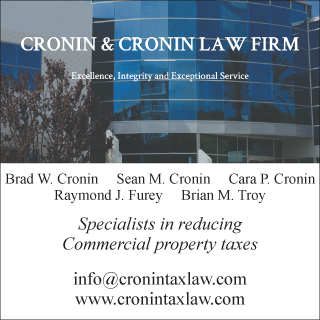News:
Long Island
Posted: December 8, 2015
Property tax incentives exist for multifamily development: A look at RPTL §581-a - by Brad Cronin and Sean Cronin
Developers have identified a lack of multifamily housing supply in many areas on Long Island. This has resulted in a number of new developments for both garden-style apartments and multi-story buildings. It has also encouraged “smart growth” by building new units near train stations and downtowns, revitalizing these areas, while also helping to prevent wasteful sprawl. Other properties such as churches, schools, and office buildings have been extensively renovated and converted to apartments as well. This has led to an increase in cooperation from municipalities in regards to approvals and density allowed with such developments, as municipalities seek to maximize a growing tax base, improved livability, and offer a superior public policy approach for affordable housing.
However, before undertaking such a project, developers must closely examine the potential property tax burden at a location. While partnerships with Industrial Development Agencies (IDAs) and Payment in Lieu of Tax (PILOT) agreements have been well publicized, the significant benefits for projects with an affordable housing component under section 581-a of
the Real Property Tax Law (RPTL) have received less attention.
The New York State Legislature passed RPTL §581-a in October of 2005 and it became effective on assessment rolls the following year. The law was designed to provide a favorable and consistent methodology for valuing properties where 20% of the units are rented to tenants who qualify for affordable housing based on an income test. The affordable units must be operating under a regulatory agreement with a municipality, state, or federal government that restricts occupancy to residents who meet certain income thresholds. In these instances, the law calls for the property to be valued for tax purposes by an income capitalization approach that applies the actual income and expenses at the property into the analysis to arrive at a market value for assessment purposes.
The property owner must submit the prior year’s actual income and expense statements to the Assessor for his or her review. If the property was not functioning for the previous twelve months, the operating budget for the property can be submitted. This allows the project to benefit from §581-a at the outset of its operations.
The assessor is then compelled to analyze the property using its actual income derived through rental payments. This eliminates situations where market rents for the units may be at high values, but annual increases in rent are restricted for particular units. Since the owner of an affordable housing project is not actually collecting market rents, §581-a ensures that the owner will not be taxed as if he were receiving market rents.
Similarly, the actual expenses at the property must be taken into consideration. Since affordable housing projects can often require considerable and often above market expenses, this allows these additional expenditures to be taken into account when determining the property tax burden.
While the income approach is generally the preferred method of valuation for tax certiorari purposes, by mandating the income approach be utilized, §581-a entirely eliminates the sales of comparable buildings as an indicator of market value. Similarly, any value attributable to a potential conversion to condominium or cooperative type ownership cannot be considered either.
The public need for affordable housing is significant. When a property owner takes advantage of the §581-a, they are benefiting by being properly taxed, but in the long term, the community is the ultimate beneficiary.
I recently represented an owner of a large apartment complex with an affordable component in excess of 20% of the units. The owner identified a flaw in their screening process that resulted in a large number of tenants falling behind in rent and, in some cases, resulting in evictions. The owner hired a new management company with a thorough screening process, but for that fiscal year, rent collections decreased while legal expenses increased. By supplying the audited financial statements to the assessor, the owner had their assessment decreased and saved thousands of dollars in property taxes. This allowed the owner to reinvest the money from the property tax savings back into the property. The next year, the apartment complex generated greater revenue, had lower expenses, and contributed a greater amount in property taxes burden as well. This is a textbook example of sensible regulation resulting in a bigger pie for all stakeholders.
Laws such as §581-a provide owners with an understanding of how their taxes will be calculated. This transparency allows developers to budget their projects effectively and work with municipalities to invest in the community in a manner that is mutually beneficial.
Brad Cronin, Esq., and Sean Cronin, Esq., are partners at Cronin & Cronin Law Firm, PLLC, Mineola, N.Y.
Tags:
Long Island
MORE FROM Long Island
Suffolk County IDA supports expansion of A&Z Pharmaceuticals
Hauppauge, NY The Suffolk County Industrial Development Agency (IDA) has granted preliminary approval of a financial incentive package that will assist a manufacturer in expanding its business by manufacturing more prescription (Rx) pharmaceuticals in addition to its existing over-the-counter

Columns and Thought Leadership

The evolving relationship of environmental consultants and the lending community - by Chuck Merritt
When Environmental Site Assessments (ESA) were first part of commercial real estate risk management, it was the lenders driving this requirement. When a borrower wanted a loan on a property, banks would utilize a list of “Approved Consultants” to order the report on both refinances and purchases.











.jpg)